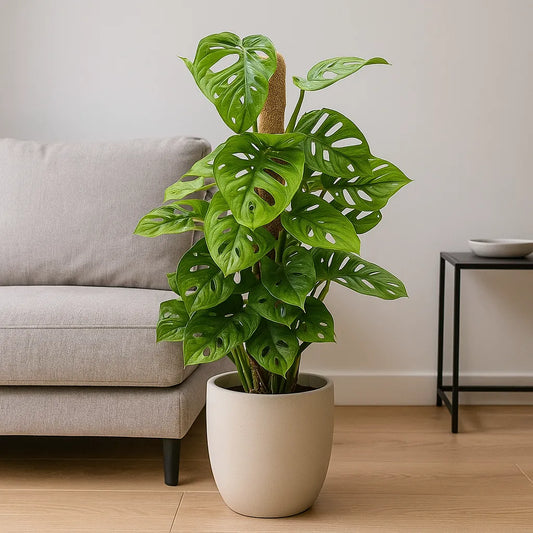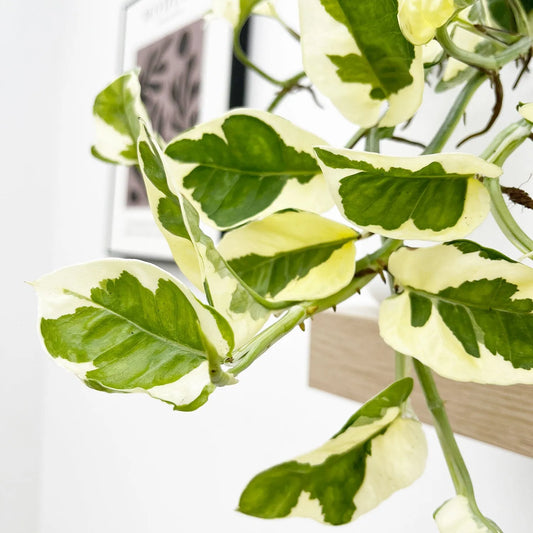Common Ficus Diseases and Pests to Look Out For
The Ficus is a popular and easy to look after tropical houseplant that needs very little care once established and given its basic needs. However, like most plants there are some diseases and pests that affect them. In this guide we will take you through the most common issues affecting these plants, what causes them and how to solve them.
Diseases
Anthracnose
Anthracnose is a disease caused by the Glomerella fungus. If your Ficus is affected by this disease you will see greasy yellow spots on the leaves that will begin to die as the fungus spreads.
Anthracnose is caused by a buildup of water on the leaves that is most commonly caused by excessive overhead watering. To prevent Anthracnose fungus on a Ficus, make sure you water directly into the soil and don’t mist the leaves if they are already damp. Once the fungus develops, apply a fungicide to the plant until it clears us and remove any infected leaves.
Bacterial Leaf Spot
Bacterial leaf spot is one of the most common diseases that affect the Ficus plant. Caused by the Xanthomonas campestris bacteria, your plant will begin to display small yellow and black spots on the leaf.
The leaf will begin to go brown and will eventually fall. You can clear black leaf spot by watering directly into the soil as excess moisture speeds up the disease's growth. Make sure you remove any infected leaves immediately to stop the condition spreading.
Branch Dieback
Caused by the phomopsis fungus, Branch dieback in Ficuses is a common condition that develops in soil that is too wet. The leaves will begin to wilt, brown and die off. After this the branches will begin to die and turn black. To prevent branch dieback in Ficus plants you need to make sure that your plant is well-draining and isn’t retaining too much water. Prune your branches as soon as they begin to discolour.
Cold Injury
Caused by sudden cold temperatures under 10°C. Cold injury in Ficuses is caused by shock to the leaves. Older leaves will begin to display brown blotches and younger leaves will become distorted and brown.
The only way to prevent cold injury on your Ficus is to control its environment. Keep your plant away from air conditioners, cold draughts or spaces that are prone to sudden temperature drops. As a rule, try to keep your plant above 10°C.
Foliar Nematode
Foliar nematodes are small parasites (Aphelenchoides) that burrow into the leaves of your Ficus and drain nutrients from them. You can tell if your plant has been affected by nematodes if the leaves begin to display a patchwork appearance of black, white and yellow spots that spread until the leaf dies.
Most plants contract nematodes in the nursery so make sure to check the leaves of your plant before you buy them. If you do see signs of the conditions then remove infected leaves immediately. If your plant is heavily infected then you need to separate it from your other plants and discard it.
Pests
Scale insects
Scale insects are small, hard to notice insects that feed from your Ficus. They are a brown colour and can be seen on the leaves or identified by sticky honeydew they leave behind. The first sign of a scale insect infection is the yellowing and curling of the leaves which quickly die. If left too long an infection of scale insects can cause the death of the plant.
Getting rid of scale insects on a Ficus is easy and can be done in a few ways. The easiest method is to thoroughly wash the plant under the tap or in the shower to wash off all the insects. You will need to wash every leaf to clear the infestation and you may need to repeat the process a few times.
Mealybugs
Mealybugs are small slow-moving insects that infest mainly young Ficus plants. They have long bodies coated in a cotton-like wax. These bugs tend to stick together in groups on the underside of the leaf so they are easy to spot. A mealybug infestation will stunt your plants growth and cause it to eventually die. To get rid of a mealybug infection, sit your plant under a tap or shower to wash them off your plant. Make sure to wash each leaf thoroughly. You may need to apply this treatment a few times to completely remove the infestation. For larger infestations you should apply insecticide soap to your plant. This will kill the bugs without damaging your plants.
Thrips
Thrips are a small and hard to kill bug that attacks Ficus plants in the summer. Adult thrips are black with small, fringed wings. The larvae are a white-yellow colour and tend to group together underneath the leaves.
You can identify a thrip infestation on your Ficus by looking at the leaves. If you see a tear in tear in the leaf with a silvery sheen it is likely a thrip infection, check the underside of the foliage to be sure. To get rid of a mealybug infestation by applying a narrow-range oil to control the infestation.
Whitefly
Whiteflies are one of the most common plant pests in the UK. They are a small white fly that sucks moisture out of the plant's foliage. You can identify a whitefly infestation by looking at the leaves which will begin to yellow and wilt. If you shake the plant, a cloud of flies will come off the plant.
Another way to identify a whitefly infestation is to lift the leaves, if you see a large amount of white, ricelike eggs then you have an infestation. Removing whiteflies is difficult and needs to be done at the first sign of an infestation. One of the first stepsyou can take to remove whiteflies from a Ficus is to use a handheld vacuum on the leaves. This will remove any eggs and bugs without damaging the plant. You can also spray with [plant with an insecticide to help control the problem, but you will need to apply it regularly.











Leave a comment
Please note, comments need to be approved before they are published.